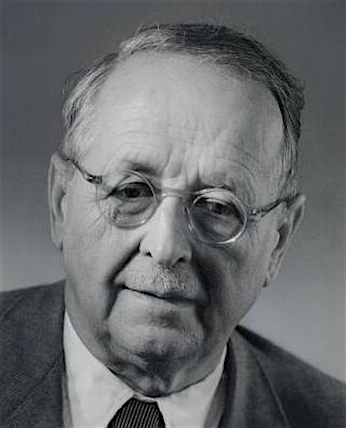 ©William O. Straub, fl. 2004-2016 wostraub@gmail.com AfterMath Copyright Disclaimer Index photos courtesy ETH-Bibliothek, Zurich Bildarchiv Who Was Hermann Weyl? Wheeler's Tribute to Weyl (PDF) Older Stuff 2005 2006 2007 2008 2009 2010 2011 2012 2013 2014 2015 2016 2016-2020 2021-2022 2023 2024 Papers Weyl's Spinor and Dirac's Equation Weyl's Conformal Tensor Weyl Conformal Gravity Weyl's 1918 Theory Weyl's 1918 Theory Revisited Weyl v. Schrodinger Why Did Weyl's Theory Fail? Did Weyl Screw Up? Weyl and the Aharonov-Bohm Effect The Bianchi Identities in Weyl Space Conformal, Parameter-Free Riemannian Gravity Gravity Wave Tutorial Conformal Kerr-de Sitter Gravity A Child's Guide to Spinors Levi-Civita Rhymes with Lolita Weyl's Scale Factor Weyl's Spin Connection Weyl and Higgs Theory Weyl & Schrodinger - Two Geometries Lorentz Transformation of Weyl Spinors Riemannian Vectors in Weyl Space Introduction to Quantum Field Theory A Children's Primer on Quantum Entanglement Veblen and Weyl Graphing the Lorentz Transformation FLRW in de Sitter Spacetime FLRW with a Constant Curvature Scalar Is There a Flaw in the FLRW Metric? On the Mannheim-Kazanas Spacetime Electron Spin Clebsch-Gordan Calculator Bell's Inequality The Four-Frequency of Light There Must Be a Magnetic Field! Non-Metricity and the RC Tensor Curvature Tensor Components Kaluza-Klein Theory The Divergence Myth in Gauss-Bonnet Gravity Schrodinger Geometry A Brief Look at Gaussian Integrals Differential Forms for Physics Students Particle Chart Einstein's 1931 Pasadena Home Today Uncommon Valor  She did not forget Jesus! She did not forget Jesus!
Visitors since 11-4-2004: Lovely Counter |
Hermann
Klaus Hugo Weyl (1885-1955).
German mathematical physicist. In 1918, proposed an early form of gauge
symmetry in an attempt to unify electrodynamics and gravitation.
Subsequently applied a similar approach to quantum physics and
discovered what is today considered one of the most profound and
beautiful concepts in modern physics -- the principle
of gauge
invariance. Shortly
after Einstein announced his theory of general relativity (gravitation)
in November 1915, Weyl
began an intensive study of the theory's mathematics and was soon
publishing related scientific papers dealing with its physical
applications. In 1918 Weyl published his book Raum-Zeit-Materie
(Space-Time-Matter), which provided the first fully comprehensive
analysis of
the geometric aspects of the theory and its
relationship with spacetime physics. One of the topics covered in the
book was Weyl's idea that gravity and electromagnetism might both be
derivable from a generalization of Riemannian geometry, the
mathematical basis from which Einstein had developed his relativity
theory. Weyl's idea was based on a new mathematical symmetry that he
called gauge invariance. I came across
Weyl's book in 1975, but it didn't impress me very much because I
didn't know general relativity. However, in the summer of that year I stumbled across
Misner-Thorne-Wheeler's
massive
Gravitation
during a one-week work assignment in the microscopic rural town of Lone
Pine, California (which then had a population
of perhaps 500 people). Miraculously, the town's tiny public library
somehow
had this book, which is now regarded as a classic graduate text on
general relativity. I checked out the
book and brought it back to the hotel room to read in the off-hours.
The
book took immediate and total possession of me, and motivated me to
learn everything I could about general relativity. (I spoke
with
co-author Kip Thorne about this in 1994, and he was quite amused
to learn where one of his books had ended up.) But Gravitation
is not an easy read,
and I had to look for more introductory texts. I soon came across Adler/Bazin/Schiffer's Introduction
to General Relativity,
which besides being easier had a chapter on unified field theory,
including
Weyl's 1918 theory of the combined gravitational-electromagnetic field.
For whatever reason,
the theory's mathematical beauty absolutely
fascinated me. I had known about local and global phase invariance
from my studies of quantum mechanics,
but I was not aware that Weyl's theory was the origin of this powerful
symmetry principle in quantum physics. I
have since read all of Weyl's books and
many of his papers. Although today I believe that my interest is now
based more on an appreciation of modern gauge theory (easily the most
profound and beautiful concept of physics), I credit Weyl for having
initiated the idea in 1918 and for his subsequent (1929) seminal
application of the idea to the then still-developing quantum theory.
Weyl
was an exceptionally gifted mathematician and physicist, but he was
also a highly cultured man in the classical German tradition. He
studied and wrote extensively on philosophy and was a serious student
of German poetry and literature. His mathematical writing style could
be exceedingly obtuse, but his other writings reveal a genuinely warm
person who truly understood the human condition. Weyl was also very
human himself; he could be overly
thoughtful and cautious, often to the point of being unable to take
action or make even basic decisions, and sometimes with the result that
he became physically incapacitated. He was a devoted and loving husband
and father, yet he could also be persuaded to stray, in accordance with
the surprisingly liberal attitudes of post-World War I Weimar
society. This
website is my feeble attempt to document (and in many cases expand on)
Weyl's ideas and thoughts on
gauge symmetry in a manner that will be accessible to anyone with a
basic understanding of calculus. Not a lot has been written about the
original theory's underlying mathematics, and I wanted to provide a
fairly detailed and complete mathematical description for those who
want to learn about Weyl's ideas and to appreciate the beauty of his
gauge theory (I'm even of the opinion that much of Weyl's work can be
understood and appreciated at the high school/beginning university
level). As this site progresses, I will also include discussions
of other topics in mathematical physics (as well as some related
scientific philosophy) which exhibit a similar mathematical beauty and
elegance. Note: I no longer post
to this site. See AfterMath
for what I'm doing now. |

